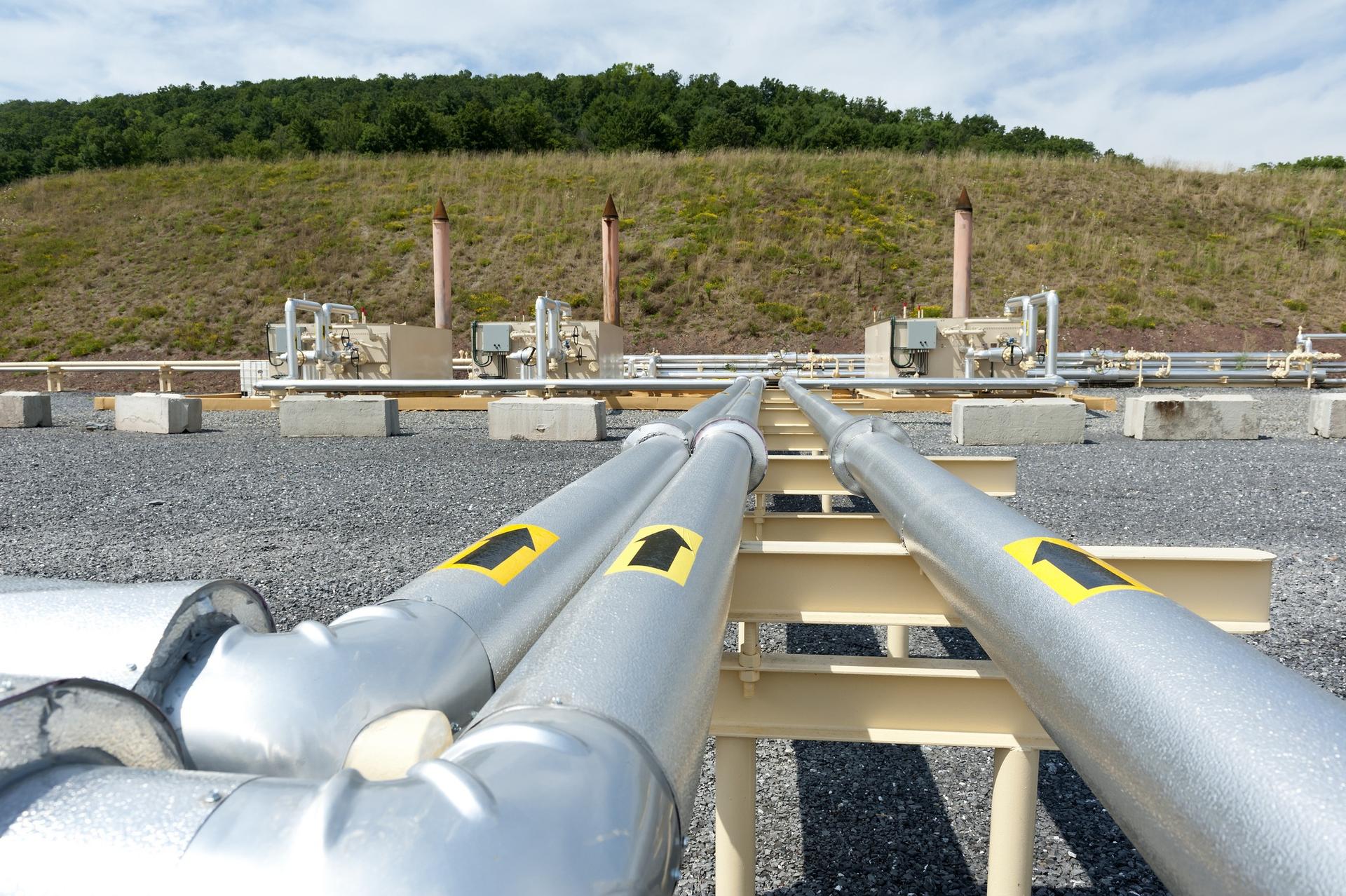Fracking is on the rise in Pennsylvania. So are radon levels. Are the two connected?
Shale gas pipes in Pennsylvania
A recent research project from Johns Hopkins University surprised Pennsylvania state experts when it found a correlation between the natural gas fracking boom and an increase in radon levels — but not everyone agrees with its conclusions.
Radon, which cannot be seen or smelled, is the second-biggest cause of lung cancer in the US. It starts out as uranium, found naturally in soil and rocks, but becomes a gas as it decays. When wells are drilled for water, oil or natural gas, the gas can be released and migrate into buildings.
Today some of the highest radon levels can be found indoors in Pennsylvania, so it’s no surprise there’s also radon in the Marcellus Shale, the rock formation that sits under much of the state. “The Marcellus is considered to be a fairly radioactive rock,” says Elizabeth Casman, a researcher in environmental engineering at Carnegie Mellon University.
Casman has seen the numbers: The Environmental Protection Agency estimates that indoor radon causes or contributes to 21,000 lung cancer deaths each year. So when fracking in the Marcellus took off in Pennsylvania, Casman became concerned. “The more I was reading about the formation and the potential for radon in the natural gas, the more nervous I got,” she says. Casman bought an electric kettle and stopped cooking on her gas stove.
Other experts in the state who have been aware of Pennsylvania’s radon levels for many years had a different view. Dave Allard, who is currently director of the Bureau of Radiation Protection at the Pennsylvania Department of Environmental Protection, says the state has known since the mid-1980s why Pennsylvania has high radon levels. “We have some of the most unique geology, soils and rocks, which create probably some of the highest of radon levels naturally in the country — maybe the world,” Allard says.
And, he says, radon in Pennsylvania is indeed trending upward. Some homes have levels 250 times higher than is actionable by the EPA — higher than would be allowed in an occupational setting or a uranium mine. So the state DEP looked into it.
Bob Lewis, the state’s chief radon officer, says the agency tested more than 30 wellheads in different regions of the state and also sampled natural gas at power plants, compressor stations and gas storage facilities.
“We collected those samples in order to make some estimates of the end user,” Lewis says, meaning Pennsylvania residents who cook or heat their homes with natural gas. “Basically, our conclusions show that they were receiving very small radiation doses from the radon in natural gas.”
So, for the DEP, the issue was taken care of: Pennsylvanians are already advised to test for radon in their homes and Marcellus Shale gas wasn’t adding to the problem. But then the state’s radon experts got kind of blindsided by the Johns Hopkins study.
Joan Casey, the study’s lead author, says her team noticed the upswing in radon in Pennsylvania happened around the same time as the fracking boom. “We wanted to see if this new industrial development potentially was contributing to increased levels of radon in homes,” she says.
Using DEP’s own data, they divided the state into regions with no fracking, some fracking and high levels of fracking and then analyzed 860,000 radon test results in the different regions. They found increased levels of indoor radon in areas that had the most fracking and significantly higher indoor radon concentrations in buildings located closer to drilled wells than buildings located farther away.
The DEP’s Dave Allard was not happy with the media attention the study received. He believed Casey’s findings could unnecessarily scare people. One problem, Allard says, is that radon is trending up in every region of the state, no matter how close or far it is from fracking activity.
Allard is convinced the uptick is related to increased soil moisture and says a study from Finland published last year supports this claim. Casey says her analysis takes rainfall into account. She says her results and those of the DEP study that found a small increase in indoor radon are reason for concern.
“There’s no safe level of radon exposure, in terms of lung cancer risk, and any increase in radon levels translates into an increased risk of lung cancer. That’s definitely true,” Casey says.
Meanwhile, Elizabeth Casman, the CMU professor who had stopped cooking, started gathering her own data. With the agreement of energy companies, Casman and a team of researchers took gas samples from pipelines. She says she was relieved by her findings. “We took all the worst cases and still it came out to a non-scary risk level,” she says. “That’s when I calmed down about cooking. I’m cooking again.”
Casman says unless someone used an unvented stove to heat their home and didn’t leave the house for 70 years, they wouldn’t really have an elevated risk of lung cancer from Marcellus Shale gas. “The increment from cooking [caused only by] the Marcellus is probably not going to be killing a lot of people,” she says.
Still, Casman and others want more data. But for now, she says, if you’re a Pennsylvania resident concerned about radon from your gas stove, just open a window.
This article is based on a report by Julie Grant of the Pennsylvania public radio program, The Allegheny Front, which aired on PRI’s Living on Earth with Steve Curwood.
